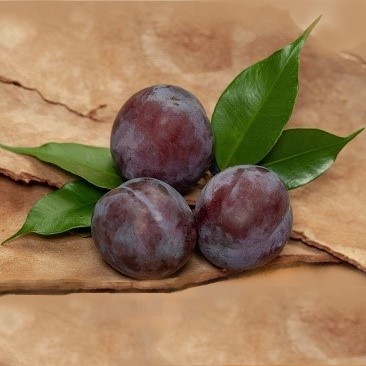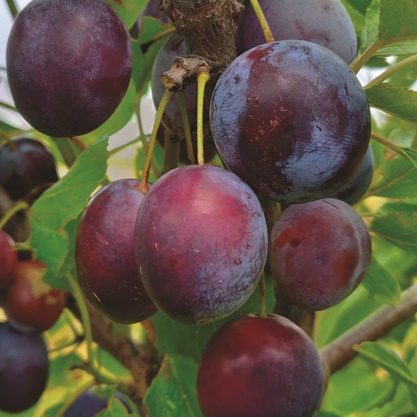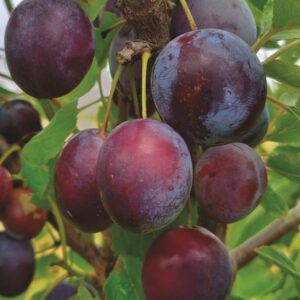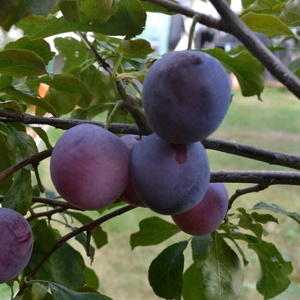European Plum : YAKIMA Semi-Dwarf (Marianna 26-24) (Orchard Grade)
$42.95
An 'orchard grade' is a tree that may be somewhat shorter, slightly crooked, or a bit scratched, or for some other reason is not a perfect front lawn specimen. These trees will work just as well in an orchard as a first or number one would, since they still produce the very same fruit.
This heirloom variety was discovered about 1902 by a Theodore Suksdorf in Washington State. It is still among the hardiest European plums known. Very large, oblong, mahogany-red fruit are well over 5cm (2") long, with firm and tender, golden flesh. This sweet, freestone plum is ideal for both fresh eating and preserving. Yakima typically ripens over a 2-3 week period and is one of the best for storage. Vigorous and productive tree.
NEEDS A POLLENIZER | ZONE 3/4 | HARVEST: EARLY-MID SEPT.
Rootstocks
G41 Dwarf
G935 Small Semi-Dwarf
G969 Small Semi-Dwarf
G30 Semi-Dwarf
G890 Semi-Dwarf
Pollenator definitions
NEEDS A POLLENIZER ̶ means another tree of the same type or kind but a different variety must be blooming nearby at the same time.
EXAMPLE A Liberty apple and a Wealthy apple can cross-pollinate. Two trees of the same variety ie: ̶ 2 Wealthy apples, cannot cross pollinate because they are genetically identical.
Other trees are marked as SEMI-FERTILE. These will set fruit without a second tree. However they will often bear more, and sometimes larger fruit if another variety of the same kind of tree is nearby.
You can select 2 different trees of the same kind marked as NEEDS A POLLENIZER or plant one of those along with one SELF-FERTILE or one SEMI-FERTILE. Also consider ripening times ̶ a Goldrush apple might not start blooming before a Pristine is finished.








